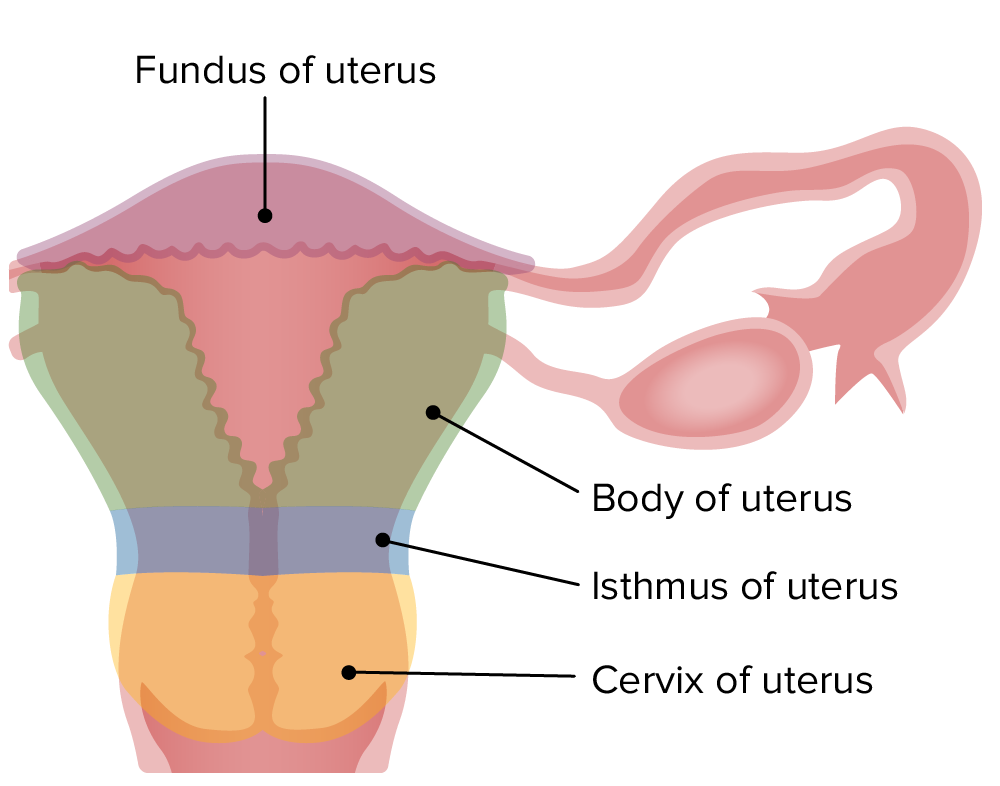Playlist
Show Playlist
Hide Playlist
Cervical Histology
-
Slides Cervix Female Reproductive Pathology.pdf
-
Reference List Pathology.pdf
-
Download Lecture Overview
00:02 We'll now take a look at the cervical histology. 00:04 So if I told you that the surface of the cervix, the exocervix, was squamous. 00:10 Take a look at the picture here, and I want you to identify exactly that. 00:15 We have our transformation zone, please notice the squamous cells. 00:21 The squamous cells, if you were to then take a look at it in actual histology, in real life histology, you’d expect it to be flat. 00:31 And then I want you to go further deep into the cervix. 00:36 What are you entering now? The endocervix. 00:39 Now, close your eyes. 00:41 If it’s the endocervix, are you not getting closer to the uterus? Yes, you are. 00:47 And the uterus, physiologically, is the potential home for a fetus. 00:54 So therefore, it would make no sense for the uterus to be lined by squamous cells. 01:01 I want you to move over to the left now of your squamous cell. 01:05 As you move to the left, you’re getting deeper into the cervix, and you’re moving towards the uterus. 01:13 Have you now established orientation of where you are in the pelvic region? If you’re moving deeper into the cervix and into the uterus perhaps, then these cells that are lining this cavity or this area would be columnar. 01:30 And therefore, as you officially then move into the uterus, it would be your complete columnar or glandular cells. 01:37 Now, Now, you see the cartoon for columnar cells. 01:42 Underneath it, you’ll see real life histology of your columnar cells. 01:47 And these are much more finger-like or glandular. 01:50 You’ll notice that. 01:52 I want you to be crystal clear about the histologic differences between the exocervix squamous and the endocervix columnar. 02:01 Why? Because of the following. 02:05 Let’s say that you have a patient who has an HPV infection and it’s the high-risk strain. 02:12 This transformation zone, collectively, is where HPV loves to live in the transformation zone. 02:23 So now, the high-risk strain of HPV, if it is to then contribute, or perhaps, develop cervical cancer, which one of these cell types does it choose 75% of the time? Squamous cell cancer. 02:38 Good. 02:39 Why? I don’t know. 02:41 But it does clinically. That’s what’s important. 02:46 So is there a possibility that HPV high-risk strain might then give rise to adenocarcinoma? Absolutely. 02:51 However, 75% of the time, it would be squamous. 02:55 Spend a few minutes. 02:56 Make sure that your focus should be the transformation zone, especially between the right side squamous exocervix, the left side endocervix with columnar cells. 03:08 And please be able to identify their real life histologic picture.
About the Lecture
The lecture Cervical Histology by Carlo Raj, MD is from the course Disorders of Vulva, Vagina and Cervix.
Included Quiz Questions
What histopathologic type of cervical cancer is the most common?
- Squamous cell carcinoma
- Adenocarcinoma
- Clear cell carcinoma
- Endometrial carcinoma
- Adenosquamous carcinoma
What results in a change in the appearance of the cervix when transitioning from the ECTOcervix (exocervix) to the ENDOcervix during a colposcopy?
- Squamous epithelium transitions into columnar epithelium.
- Columnar epithelium transitions into squamous epithelium.
- There is a gradual increase in the number of blood vessels from the ectocervix (exocervix) to the endocervix.
- There is a gradual increase in muscularity from the ectocervix (exocervix) to the endocervix.
- There is a gradual increase in secretions from the ectocervix (exocervix) to the endocervix.
Customer reviews
5,0 of 5 stars
| 5 Stars |
|
1 |
| 4 Stars |
|
0 |
| 3 Stars |
|
0 |
| 2 Stars |
|
0 |
| 1 Star |
|
0 |
This is a great lecturer, he explains the content making it looks easy




